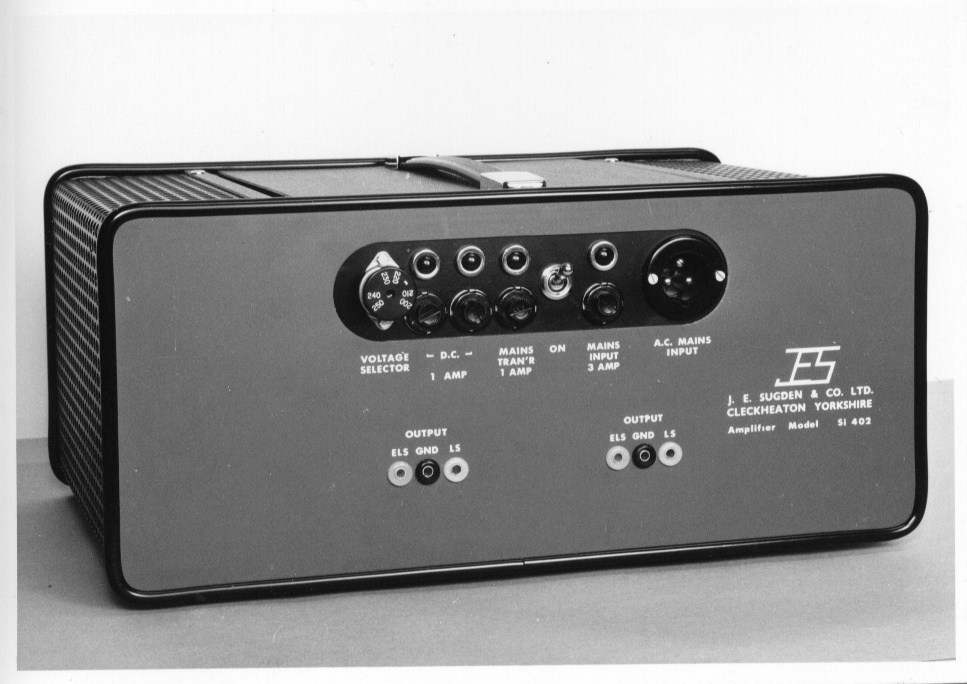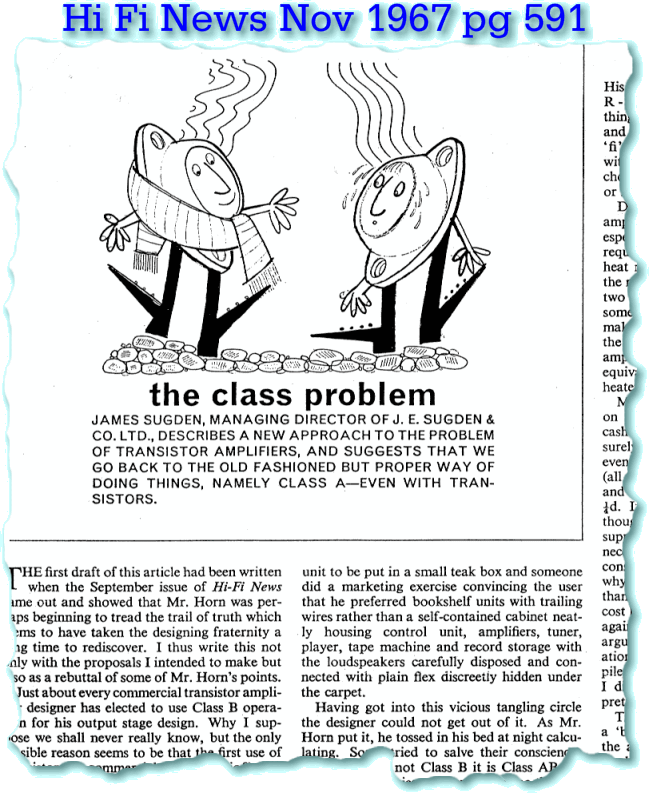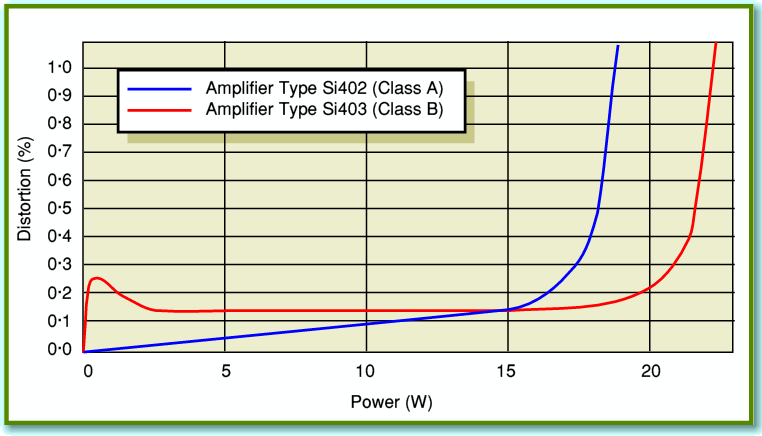




| “If you desire something to compare with a first-rate Class A valve amplifier costing £50 or more for a stereo unit you must compare it with an equivalent standard of transistor amplifier which unfortunately is not at present available. As is obvious from this article my own company is working on one, and some recent advertisements and discussions and, in some cases, obvious silences, make it clear that other companies are doing similarly.” |
| Rated o/p | 15W | THD at Rated o/p | 0·15% | THD at 1W | 0·01% |
| Feedback | 30dB | Freq. resp. +/-0·25dB | 20Hz-20kHz | Rise time | 5 microsec |
| Hum+Noise | -85dB | Sensitivity for 15W | 0·5V rms | Input Imp. | 47 k |
| Output Imp. | 0·6 Ohm | Power Transistor diss. | 50W (no sig) | Stability | Unconditional |
| Rated o/p | 20W | THD 1kHz 15W | 0·1% | THD at 1W | 0·01% |
| Rise Time | 5 microsec | Freq. resp. +/-0·25dB | 20Hz-20kHz | Power Consumed | 110 W |
| Hum+Noise | -85dB | Sensitivity for 15W | 0·45V rms | Input Imp. | 470 k |
| Norm. o/p Imp. | 0·25 Ohm | ELS o/p Imp. | 1·6 Ohm | Stability | Unconditional |
|
CLASS A ALL SILICON TRANSISTOR STEREO AMPLIFIER
MODEL Si 402
J. E. Sugden & Co Ltd announce that production of the only commercially available all transistor Class A stereo amplifier has now started. The amplifier formed part of the subject matter of a recent article in one of the technical journals and has provoked much interest. The problems of cross over distortion, with its attendant production of the more objectionable high order harmonics, especially at lower power levels, are now well known. Only recent developments in output power transistors have permitted true Class A operation to be achieved. Class A operation offers a distortion content which is negligible at low power and rises in a linear manner with increasing output. The use of Silicon transistors offers almost absolute reliability and also due to the absence of valve heaters the quiescent heat dissipation is considerably lower than that from a valve amp of equivalent rating.
Special features of the Si402 include two completely independent amplifier sections, the only common part being the mains transformer primary, current and voltage limiting in the output stages, a choice of high or medium damping factors and the designed for load impedance in the 15 to 20 Ohm makes the amplifier eminently suitable for the high quality loudspeakers including electrostatics. Comprehensive facilities for pre-amplifier power, remote switching, circuit protection, and hum loop avoidance are included. The construction is to professional rather than commercial standards and all aspects mechanical and electrical are rigorously inspected at various stages of manufacture. In addition as proof of maintenance of inspection each individual amplifier is provided with a copy of the final inspector’s test sheet and includes frequency response figures, noise figures, and distortion graph for each half of each individual amplifier. The recommended retail price is expected to be about 100 GNS. A matching high quality versatile pre-amplifier control unit will also shortly be available. |